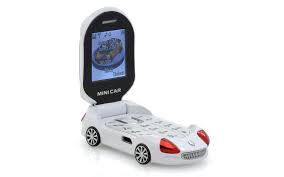Driver distraction- the flip side, considers how phones can save lives, as well as take them.
But, first, some history. Back in 2003, when cellphones were in their infancy, Finnish researchers observed that mobile phone users communicated their location 70 percent of the time (e.g., “I am now at the train station”) compared to just 5 percent for landline users. Users no longer need to enunciate their location- a GPS does that. What users did not know back in 2003 was that cellphones would change mobility with their two-way capability.
In 2016 we continue to ride in conventional vehicles that resemble the ones on the road in 2003. But, how we travel in vehicles is quite different, thanks to the smartphone. The obvious change is that phones have enabled carshare services to flourish, like Uber and Lyft. But, telematics have also brought a quieter, but seismic change, to the average, solo car driver.
Lives Saved by Smartphones?
Most drivers know that they should not text, talk on phones, and drive but most seem to continue to do so. Smartphones “drive us to distraction” but they are also driving the market, faster than we realize, towards autonomous cars. A fully automated car would let passengers safely use their phones to talk, text, and do internet searches. There is a clamor to accelerate the timeline for autonomous cars as traffic fatalities from distracted driving increase.
The NHTSA publishes the data on traffic fatalities due to driver distraction, but we know less about lives saved by smartphones in cars. For example, while many accidents with distracted driving involve younger drivers, particularly the age group ages 20 to 29, we do not know if this age group still have more facility interacting with a car’s electronic devices than older people. In an intriguing article, Mental Floss posits that an earlier generation of drivers found the in-car radio to be a distraction, as people fumbled with knob controls and listened to the broadcasts. A1934 poll by the Auto Club of NY found that 56 percent deemed that the car radio to be a “dangerous distraction.” Over time, car radios became less problematic and, the key point is that either the radios or the drivers (or both) evolved so that drivers did not have to refocus so much their attention to use them.
Anticipating the Road Ahead
Until recently radios were vital in cars. They brought drivers news of the road conditions and traffic…usually “on the 5s or on the 8s” and of course, in a way that was not specific to the route you might be traveling on. Today, smartphones (and dashboards that have a built-in GPS) play a vital role in keeping drivers informed about road conditions. The also assist drivers in selecting routes, and avoiding congestion. Most significantly, they provide information so that drivers can anticipate their next turn, choose the best travel lane, and be alerted for stopped traffic. There are probably many traffic accidents avoided here….we just don’t know how to count them well.
Educational Loops
Vehicle telematics have another “saving grace.” As drivers of electric cars know, haptic-type feedback helps drivers optimize their battery useage. Similar electronics can be used to improve driver skills. Smartphones have the capability to employ GPS, accelerometers and gyroscopes to sense if a driver is braking or accelerating sharply, traveling over or under the speed limit, or making jerky turns.
To date, a few insurance companies have realized the potential of haptic feedback for drivers and offer driver discounts when the phone features are turned on and recorded. THe EverQuote’s Everdrive app — rates drivers on five factors: phone use, speeding, accelerating, cornering and braking. They claim a 31% improvement after using the app. There are many other examples of in-car monitoring and two-way tracking, and they appear to significantly modify how driver’s behavior. Again, There are probably many traffic accidents avoided here….we just don’t know how to count them.
To look at the flip, it is unlikely, if you rolled back to 2003, that people expected to be doing so much talking in their cars. But, it is even more surprising that the cars, in turn, are doing so much “talking” back to drivers! The car-radio teaches us that new hardware, at the outset, brings distraction. However, it also has the capacity to evolve and bring entirely new means to scan for safety, travel conditions, and hazards beyond the windshield.
